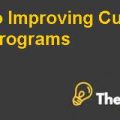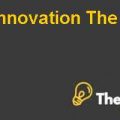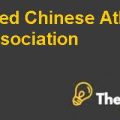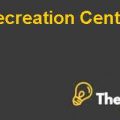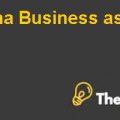
Activity-Based Management at W.S Industries (B)
Introduction:
The report presents a case about W.S Industries which was recently embarked as the manufacturer of high quality products at relatively low cost. In 1998, the company faced a reduction in price due to competitor’s pressure which led the company to revise its costing and budgeting technique and move towards continuous improvement in order to achieve success in the long run.
Case analysis:
The case contains a detailed analysis of the production process and modern costing technique which could be adopted by the company in order to identify and eliminate the non-value adding activities. Further, the report also contains the continuous improvement strategies in order to reduce cost and improve profitability.
- 1. How W.S Industries can develop competitive advantage by improving the production process?
In order to achieve a competitive advantage, it will be beneficial for the company to determine the value generating activities which are most valuable to the customers; so that the organization can focus on such activities in order to satisfy their needs and reduce cost in order to increase profitability. These are divided into five primary activities and they are as follows:
(a) Inbound Logistics: It includes the receiving and warehousing of raw material. W.S Industries can perform an early inspection of raw material which will be essential to eliminate defects at an early stage. Further, Economic Order Quantity (EOQ) can be adopted in order to reduce the inventory storage cost.
(b) Operations: It includes transforming the raw material into finished goods. The company can adopt a culture of minimum defects. The company can hire trained labour in order to eliminate the number of defects.
(c) Outbound Logistics: It includes warehousing and distribution of finished goods. The company can reduce its cost by aligning different products in order to use a single mode of distribution channel which will reduce the distribution cost.
(d) Marketing and sales: It includes the identification of customer’s needs so that appropriate marketing strategy can be adopted in order to generate sales.
(e) Services: It includes the service to be provided to customers after it has been sold to them. W.S Industries can test products before delivering it to the customer and can also regularly contact with customers in order to identify any deficiency.
Further, the organization shall also focus on some secondary activities as well i.e. procurement, information technology, HR management and firm’s infrastructure.
All these strategies will enable the organization to strongly focus on value adding activities and will benefit the organization to reduce the cost. W.S Industries can also move towards JIT approach, which will reduce the inventory holding cost significantly but adopting this strategy, will require good relations with suppliers.
- 2. How Activity Based Costing benefited W.S Industries? How different cost models and cost drivers are linked with one another?
Activity based costing is a modern technique that is used to allocate the overhead cost to wide range of company’s products, in order to determine the cost and profits appropriately. This costing method benefited WS Industries to identify the products, which were generating profits but were actually loss making; this led the organization to discontinue around 60 products which had been identified as unprofitable. Such strategy helped the organization to focus on profit generating products; which ultimately contributed towards increasing the value of shareholders.
Cost models are basically the activity centres which incur cost independently and different cost drivers are determined for each activity in order to allocate cost to wide range of products. WS Industries had three different cost centres which included internal movement, inspection and process support which was later on divided by the appropriate cost drivers identified by the company in order to determine cost driver rate. Later on, the cost driver rate would be used to allocate costs to products which incurred such activity.
- 3. Determine the budgeting process of W.S Industries? How it benefited the organization to achieve the long term strategic success?
W.S Industries adopted an Activity Based Budget (ABB) for better planning and appropriate resource allocation. In an ABB, accurate forecasting of sales is very important so the company initially forecasted the next year’s sales by reviewing the previous records and sales order books which were expected to be achieved in the next year.
Further, in order to facilitate better profit margin the company adopted a linear programming (LP) approach which would determine the appropriate product mix and would maximize the company’s profit. There were some production constraints available which were identified and adjusted by increasing the selling price in order to eliminate the demand and process. Later on, the sales were predicted and expenses were forecasted in order to match against sales. The overheads were critically determined and cost drivers were used in order to appropriately allocate over heads to a wide range of products..............................
This is just a sample partial case solution. Please place the order on the website to order your own originally done case solution.
Described activity-based budgeting WS Industries. Also describes the target cost under product redesign, and product, customer and order profitability. "Hide
on VG Narayanan, Jeremy Cott Source: Harvard Business School 18 pages. Publication Date: February 19, 2002. Prod. #: 102063-PDF-ENG



